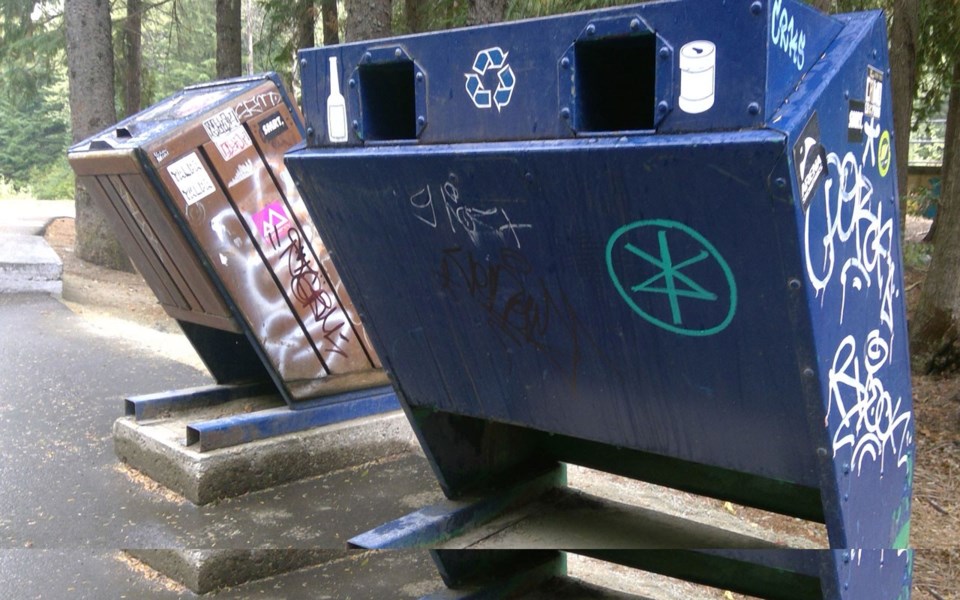It feels like there is an undercurrent of discontent in the resort right now.
I'm not talking about discontent around the substantial issues of the day like housing, affordability, living-wage jobs, child care and so on. Discontent isn't nearly strong enough a word for the emotions bubbling away on those topics (especially as we head toward the Oct. 20 election).
What is apparent is a discontent that is manifesting itself in outright disrespect for the community.
Lately, there have been several examples of what this looks like. Did you notice, for example, the social media posts about the greenery ripped out of village planters and strewn along the stroll?
Many will just put it down to hijinks of spirited youths walking the stroll after a night out on the town. But, sorry, that is no excuse for what is pure destructive vandalism.
Would they behave like that walking up the garden path to their parents' home?
This has happened more than once in recent months.
And what about the hooligans who used their grey pick-up to do donuts on the playground at Spring Creek Community School—leaving hundreds of dollars worth of damage, not to mention a torn-up field left behind for elementary-aged children wanting to play outside.
We are also learned this week of a tent city of sorts near the skate park that generated three pick-up trucks full of garbage as it was cleared out (thanks to 50 North Exterior Property Detailing for cleanup).
Let's leave aside the fact that people camping in the village woods are considered by some a result of the lack of affordable housing, and just look at the level of garbage this camp generated.
The thousands of cigarette butts, packaging, and leftover food chucked into a five-person tent turned garbage can is beyond disrespectful to the community and the natural animal-filled environment we live in.
Said a Facebook post: "If you can afford to eat that much vegan and organic food, drink that much alcohol and smoke that amount of cigarettes, you can afford to live in Whistler... It took our crews 2 days and 3 truckloads to clean up your mess.
"Whistler is one of the most beautiful places on Earth and we all work damn hard to afford to live here. We do not need garbage-spewing freeloaders like you destroying our environment."
But there is more.
Who hasn't noticed the amount of graffiti springing up all over town?
I'm not talking cool tagging—graffiti as an art form. I'm talking just pure defacement of property.
We have even had symbols of hate such as swastikas show up.
This week, the police are on the lookout for tagger who struck at the conference centre (see related story on page 32). Graffiti is showing up on public benches, on the new signs, which the Resort Municipality of Whistler (RMOW) has spent hundreds of thousands of dollars on, on old signs, around the day skier lots, the Audain Art Museum, on rocks, recycling containers, parking metres, and the list goes on.
There are stickers all over the place too.
Some effort has been made to remove the unsightly graffiti in some places, but in others clearly nothing is being done.
In 2014, the RMOW went to great lengths to investigate how to introduce wayfinding and signage to the resort. This is a million-dollar-plus program and the signs are for the most part pretty awesome.
Built into the program is an acceptance that there will be vandalism, that cleaning will have to be carried out and that 10 to 15 per cent of the construction cost will be needed for annual maintenance of the system according to the RMOW report.
A communications spokesperson said that budgets were unavailable for the cost of dealing with vandalism annually, but that in June, $200 was spent on graffiti removal and about $440 was spent after vandals tampered with an irrigation system.
Every year, we also see our bus shelters vandalized—people smash the glass and spray bomb the inside of them. They are another popular spot for graffiti.
Many of the shelters used to be stained natural wood but now in some, the wood is just painted brown to cover the marks of the vandals.
Whistler is not unique in experiencing vandalism, and like other places the community and our local government must combat it.
In 1982, social scientists James Q. Wilson and George L. Kelling introduced the "broken windows" theory, which said that allowing small crimes such as broken windows or graffiti to go unchecked reduces a community's sense of security and can lead to larger crimes.
This type of behaviour and the physical signs of it are not what Whistler is about. Let's make sure that is the message we share and act on.




